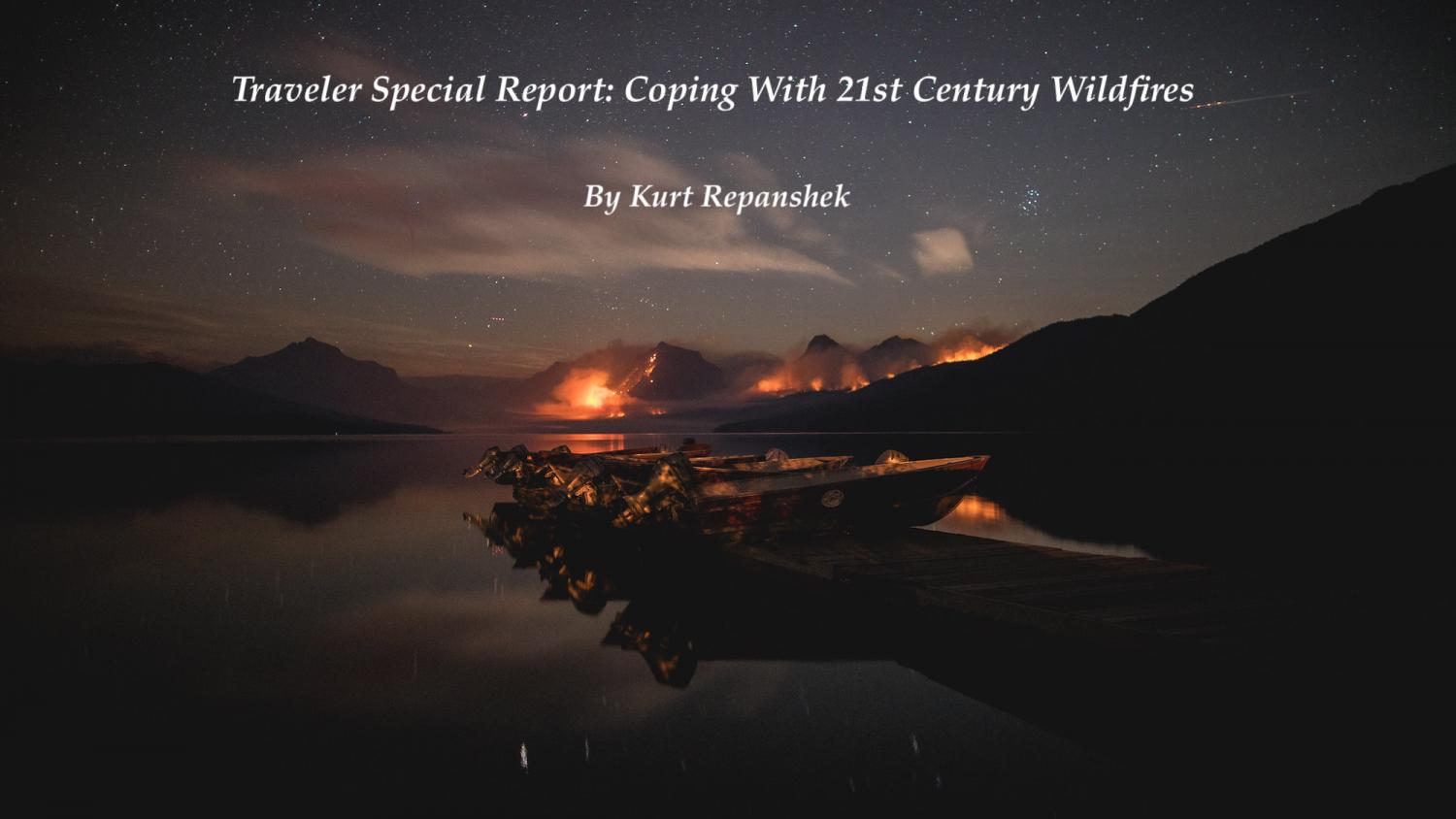
The Sprague Fire of 2017 at Glacier National Park, as seen from Apgar Village/NPS
Gazing out at night from the Clay Butte Lookout, the Clover-Mist Fire in Yellowstone National Park flickered like hundreds of twinkling campfires in the distance. But in reality, it was glimmering from flares of a wildfire that had burned nearly 400,000 acres as part of the historic 1988 complex of fires that blackened the park and adjacent national forests.
At the time, the fires that drew the nation's attention to the world's first national park were considered simply part of the fire regime that historically has existed in Yellowstone. But in the fires' aftermath, "climate change" entered the country's lexicon. Since then, too, increasingly intense wildfires have forced the National Park Service in the West to both evolve and refine its approach to battling flames that are arriving with greater and greater ferocity.
"I’ve heard someone put it as, 'This is not the beginning of the end, it’s the end of the beginning,'" Crater Lake National Park Superintendent Craig Ackerman said as we discussed whether the 2020 wildfire season that was particularly brutal in California, Oregon, and Washington was the "new normal."
"We have been set up due to fire suppression and increasing temperatures and a number of other factors, like the wildland urban interface (WUI), of the past 50-100 years to a situation now that may take us decades to resolve,” he explained.
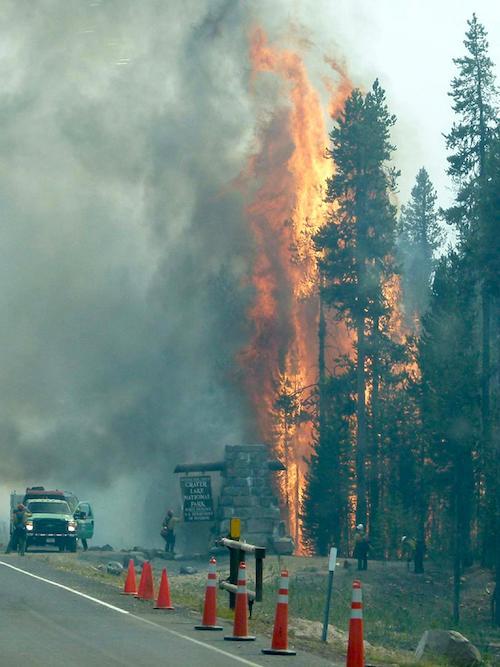
In 2015 the National Creek Complex of fires burned a record 20,960 acres in Crater Lake National Park/Oregon DOT
"To dovetail in behind Craig," added Jennifer Gibson, Crater Lake's chief of resources and fire who also was on the call, "some people are saying that we are entering the new era of the 'megafires.' And with the Camp Fire in Northern California, the Tubbs Fire in Santa Rosa, fires are now blowing through urban interface areas where there’s not an accumulation of fuels like maybe a grasslands, or a woodland.
"They’re blowing through that and into industrial areas, across highways, into Wal-Marts," she continued. "We are entering this era where fires are becoming larger and more severe and more destructive, and each year it seems like we’re surpassing the acres burned and the severity burned by magnitude. 2018 was on the map for some of the most destructive fires ever recorded, and most expensive fires in terms of damage, and now they’re just getting bigger. This year surpassed them again."
At the National Interagency Fire Center in Boise, Idaho, which coordinates the nation's wildfire firefighting efforts, Nate Benson said it's obvious that climate change is altering wildfires and the fire season in the Western United States.
“With a changing climate, and you’ve seen that play out in California, you can see some of the impacts," said Benson, the agency's (Acting) Branch Chief of Wildland Fire. "A good example is what happened on the Cameron Peak fire outside Rocky Mountain. It entered Rocky Mountain. A high-elevation fire (roughly 9,000 feet above sea level in places), becoming a long-duration event, still going on, persistent, longer than expected, outside of what we’ve seen in the past."
On the ground in Yellowstone to report on the 1988 fires, I witnessed the imposing power of the conflagrations. Standing on the road between Canyon and Madison Junction one day, I felt the radiating heat from the lodgepole forest burning 75-100 yards away like oversized candles as the flames consumed them. The flames seemed everywhere in the park that summer, and there were days when rangers led convoys of vehicles to guide visitors out of the park so as not to get in the way of firefighters on the ground and helicopters pulling massive buckets of water from the park's lakes and ponds.
Smoke from the fires infiltrated the lodges that remained open. It seemed as if Yellowstone was going up in flames. Later that summer, though, with a better understanding of the ecosystem benefits fire brings and seeing the first sprouts of fireweed in burned areas, I realized all was not lost, that this was how fire naturally cleanses forested landscapes of downed trees, overgrown vegetation, and duff.
But things have changed and altered fire behavior.
Changing Climate And Fire
Yellowstone's conflagration was more than three decades ago, and in the ensuing years climate change has literally exploded the views of wildfire on the land. The years have brought drought, higher-than-normal temperatures, and disease to many national park forests, making them particularly vulnerable to a lightning strike, an abandoned campfire, or even a chain pitching sparks as it's dragged down the road behind a vehicle. Fires at elevations that in the past would have been doused by fall snowstorms are not just starting in the fall but burning deep into the season, as the East Troublesome and Cameron Peak fires at Rocky Mountain National Park this October demonstrated.
Climate change is affecting the characteristics and behavior of many of these fires. Areas of forests that burned tend to be warmer than those that didn't, according to new research, leading to worries that "trees will have a more difficult time re-establishing." Changes in the North American monsoons, which had long reliably arrived in the Southwest in mid-summer, are influencing fire season, and not in a good way. This year's monsoon season was the second-driest in history. "When the monsoon is delayed, that means the fire season lasts longer, giving fires more time to burn," said Don Falk, professor in the University of Arizona's School of Natural Resources and the Environment.
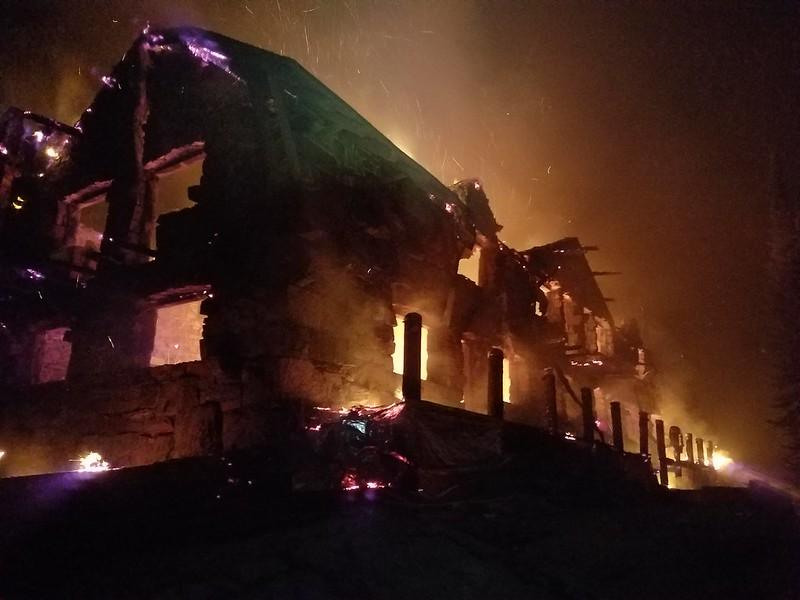
Firefighters had no chance of saving the Sperry Chalet from the Sprague Fire in Glacier National Park/NPS
The on-the-ground evidence underscores the changes the warming, and drying, climate is having. You could see it in 2017, when the Sprague Fire raged across Glacier National Park, taking down the Sperry Chalet in the process, and in 2018, when the Carr Fire burned more than 97 percent of Whiskeytown National Recreation Area and the Woolsey Fire burned 88 percent of federal lands within Santa Monica Mountains National Recreation Area.
Through September this year wildfires didn't seem quite as devastating to the park system, though from mid-August into September the Woodward Fire burned nearly 5,000 acres of Point Reyes National Seashore. Rocky Mountain National Park saw its biggest fire in history as the Cameron Peak Fire that erupted in the Arapho and Roosevelt National Forests burned 6,500 acres in the park, though in a very remote section that didn't impact operations. But in mid-October the eruption of the East Troublesome Fire to the west Rocky Mountain forced the evacuation of the gateway community of Grand Lake, led to the temporary closure of the entire national park, and left Estes Park residents on edge as it moved towards the heart of the park late last week and towards their gateway community.
Smoke from wildfires in California also led to temporary closure of Kings Canyon and Yosemite national parks, and Sequoia National Park also shuttered for a while due to evacuation orders for Three Rivers, the gateway community where many park employees live.
This is the fate, and the future, climate change has brought to fire regimes in the Western half of the National Park System. The wildfire threat isn't isolated, either, as climate change has the "overwhelming majority of parks ... already at the extreme warm edge of historical conditions," according to researchers. Literally adding fuel to the high temperatures are forests that not only are tinder dry and cluttered with vegetative litter, but which evolved to burn.
"It’s an all or nothing type forest stand," Mike Lewelling, the fire management officer at Rocky Mountain National Park in Colorado, told me. "Mother Nature created lodgepole to all burn at the same time."
Benson at NIFC agreed.
"The one thing we’ve learned, we can put fires out, but at some point the conditions become such that the fires will do what they want to do," he said. "We have a certain level of success. Even under extreme conditions we still have success. Fires will start and burn. But the landscape is a highly burnable landscape under certain conditions."
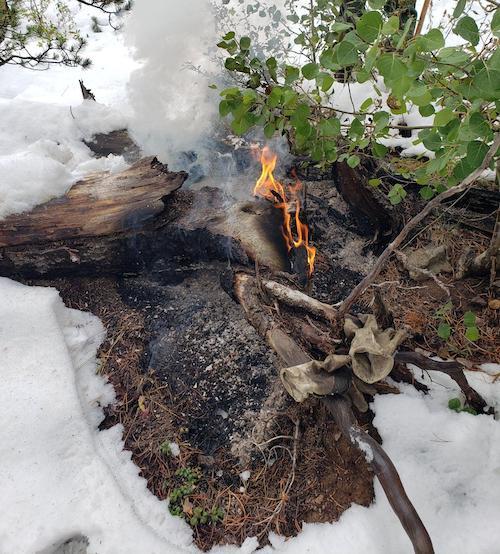
A September snowstorm failed to put out the Cameron Peak Fire that burned into Rocky Mountain National Park/USFS
A few minutes later in our conversation, Benson poined out that "(T)here is a clear realization on our end that fire will be a part of that landscape. It may change, it may make that landscape different, but we’re going to have to manage it. Sometimes we will put fires out aggressively, and other times we will look at the fire and say we can manage this fire within the park, within this area of the park."
Battling fires in the parks is largely approached on a case-by-case basis: Are facilities or visitors threatened, are there ecological benefits to be had from the flames, are firefighters available? Those are factors that incident commanders can find themselves juggling on a daily basis, especially with fires such as East Troublesome, which grew by 45,000 acres on October 24 as gusting winds fanned and pushed the flames.
"The way fire is behaving, the way fires recently burned has changed dramatically, too, and we have to adjust," explained Benson. "But the one thing I do know is you can only keep fire out of a system to a certain extent, and you need to really look at the landscape’s ecology, and the fuels to try to provide yourself with more options, whether it’s a prescribed fire, or using wildfire to give you more mosaic, to give you more options to manage that landscape.”
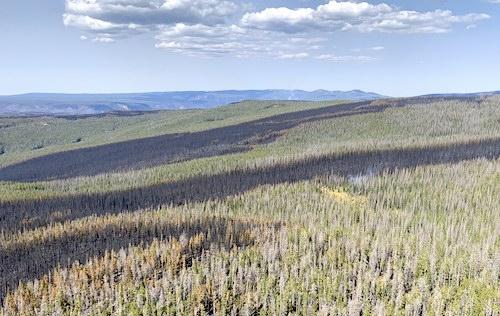
Wildfires often create mosaics from burned and unburned sections of forest, patterns that can slow future fires by acting as a sort of firebreak. This photo was taken of the Cameron Peak Fire north of Rocky Mountain National Park/NPS, Mike Lewelling
Long before humans arrived on forested landscapes nature took care of forest debris through natural fires sparked by lightning. Native peoples copied this by setting their own fires to clear underbrush in the woods and to open up meadows.
The Park Service has been duplicating this practice for decades in some parks. At Yosemite, 2020 marked the 50th year of setting prescribed fires to encourage forest health and minimize large burns.
Dan Buckley, a firefighter with more than four decades of fire seasons behind him, appreciates the benefits of these fires.
"Yosemite is also in its 48th year of managing lightning ignitions in the backcountry, allowing for natural processes to play out as much as possible," he said. "Starting in 1972, natural ignitions have been used to help maintain a landscape that likely resembles what the first non-native people found in the Sierra Nevada-- a wilderness where fire interacted with the flora and fauna that had evolved with fire. The Illilouette Basin in the south-central part of Yosemite is likely the Sierra Nevada watershed most closely restored to what had occurred in pre-historic time."
Battling 21st Century Wildfires
The wildfire battles will certainly be pitched going forward, and in response Western park managers are being more aggressive in
"fuels reduction," a process involving chainsaws and hand tools to remove downed trees, branches, and vegetation that can provide flames with "ladders" into a forest's canopy, where it can roar across the roof of the landscape, spitting out embers that can travel a mile or more on the winds and land to ignite more fire. Not only is that reduction intended to reduce the threat of major conflagrations, but it can open up a forest to give firefighters more room to get in and combat the flames without clambering over and around downed trees.
At Crater Lake, crews have worked for two decades or so to clean a 200-foot-wide strip or so area of forest on either side of the park's entrance roads, and also used prescribed burns to "clean up" the forest litter. "We wanted to thin on both sides of (Oregon 62) so if we do have to evacuate and get people out, the fire intensity would be less and it would make it safer for firefighters to do a burnout," Gibson explained to me.
“Once (fire) gets up into the canopy, it’s virtually impossible to stop," Ackerman explained. "People think you can drop a bombload of water on it and it stops a fire, but that’s just not true. Retardant only slows the fire down and allows the people on the ground to put a line and get the fire out."
By necessity, fire managers have gotten more creative in finding tools to help them. We've seen sprinkler systems, similar to the one placed atop the Old Faithful Inn in 1988 to keep it from falling victim to the flames, installed in other park settings. At Glacier in 2017 a massive irrigation system deployed around the Lake McDonald Lodge sucked water from Lake McDonald and sprayed it out across the landscape to keep it wet against the Sprague Fire.
"It essentially restored the sort of rainforest kind of environment around the Lake McDonald Lodge that quite honestly the lodge probably hadn’t seen in decades," said Glacier Superintendent Jeff Mow. "It put out so much water we actually had to shut the system down because people got concerned that we wetted the soils to the point where some of the large trees might fall over on their own if there was a wind event."
Another sprinkler system was set up on the boardwalk that winds through the Trail of the Cedars Nature Trail.
Portable "pools" of water sometimes are used by ground crews when there's no nearby water source. Architectural materials that are less flammable than, for instance, historically accurate shake shingles, are being used where both appropriate and feasible.
The fierce battle on September 7, 1988, to save the Old Faithful Inn from that summer's fires has not been forgotten. Today the park is engaged in a decade-long campaign to reduce wildfire fuels in Yellowstone's protected areas, with recent and planned reductions near West Yellowstone (60 acres), Grant Village (more than 250 acres), Old Faithful (80 acres), and Canyon Village (200+ acres), Superintendent Cam Sholly told me.
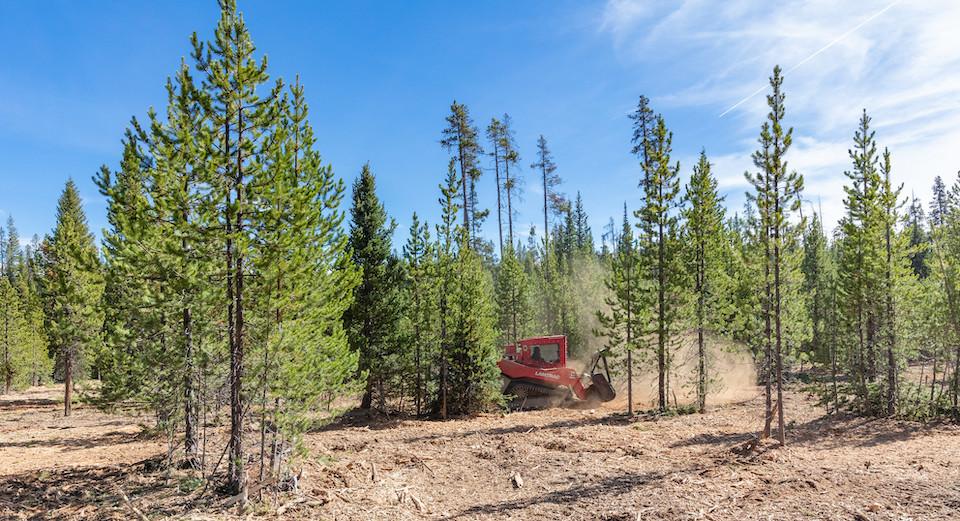
Mechanical "masticators" essentially grind forest litter into mulch. This one was captured in action near Grant Village in Yellowstone in September 2020/NPS, Jacob W. Frank
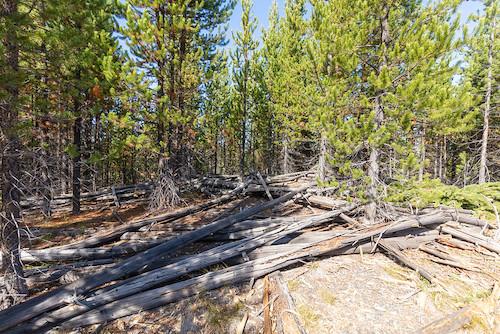
Before fuels reduction near Grant Village in September 2020/NPS, Jacob W. Frank
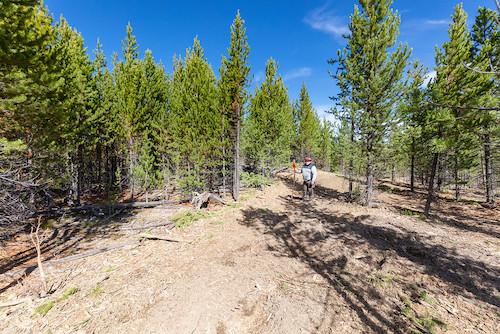
After fuels reduction at Grant Village in Yellowstone National Park in September 2020/NPS, Jacob W. Frank
Sholly also notes that Yellowstone's history with fire has left the park's landscape with a mosaic of burned and unburned forest stands, thus making the park "less prone to megafires due to the uneven age structure of our forests."
But at the same time, "We are actively engaged with University of Wisconsin researchers on several long-term studies on the potential impacts of a higher frequency of fire in our lodgepole pine forests so that we know better what to expect if this potential climate change outcome comes to fruition on the landscape," he said.
Lodgepole To Aspen
At Rocky Mountain, not only is the burning of piles of forest litter an annual ritual, but there are efforts to transform some lodgepole stands into aspen glades. Trees are trees, but some are less flammable than others, it seems.
While aspen are combustible, they don't burn as intensely as lodgepole, Lewelling said.
"Aspen are a lot moister, they don’t have the same leaf structure. The needles of lodgepole burn like gasoline," he explained. "When a lodgepole goes up, it utilizes the oils in the tree to really burn hot. Aspen, it’s almost like a heat sink. I’ve seen it burn, but it doesn’t burn at the intensity as lodgepole does.”
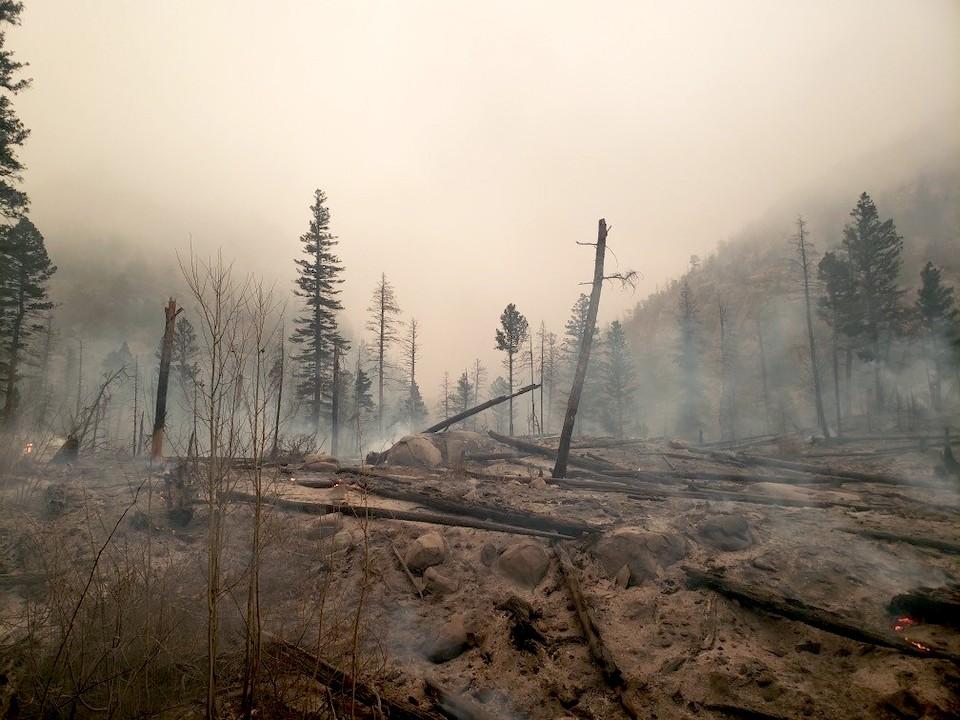
The East Troublesome Fire that roared into Rocky Mountain National Park last week was indicative of how climate change is affecting wildfires: blazes arising late in the season, burning across forests suffering from drought and pine beetle infestations, and being fanned by strong winds/NPS
As it turns out in Rocky Mountain, aspen are just waiting for their chance to stand tall.
"We did a field trip with an aspen specialist, and throughout this whole eastern slope of Rocky, you can go all over the place and see these aspen clones that are being suppressed because of the lodgepole," explained Lewelling. After a fire passes through, aspen, not lodgepole, are the first trees to come back, he pointed out.
While Glacier National Park has been the setting for some spectacular wildfires in recent years, Mow said the fire history in the park has created uneven forest ages that can help prevent massive conflagrations.
"When you look at all the fires that have burned in the park since 1990, it’s about 455,000 acres of the park have burned. Almost half of the park, which has created quite a mosaic of burned landscape, which reduces the severity of some of these big fires," the superintendent said. "They won’t be able to burn with the same intensity throughout the park."
And yet, there are indications of a change in the park's fire regime, changes that could alter Glacier's appearance.
"Take our 2018 fire, which actually burned over an area that burned in 2003. That’s a new area that’s being looked at now. What does the sort of fire recurrence interval look like? How is that reshaping our forests?" said Mow. "Because if you were getting fire recurrence intervals that were as short as 15 years, it really means you’re not going to have a forest coming back. Between the change in the climate getting hotter, drier, longer fire seasons, as well as getting reburned in as short as a 15-year interval, a lot of the ecologists are saying we’re going to end up with more grasslands than forests.”
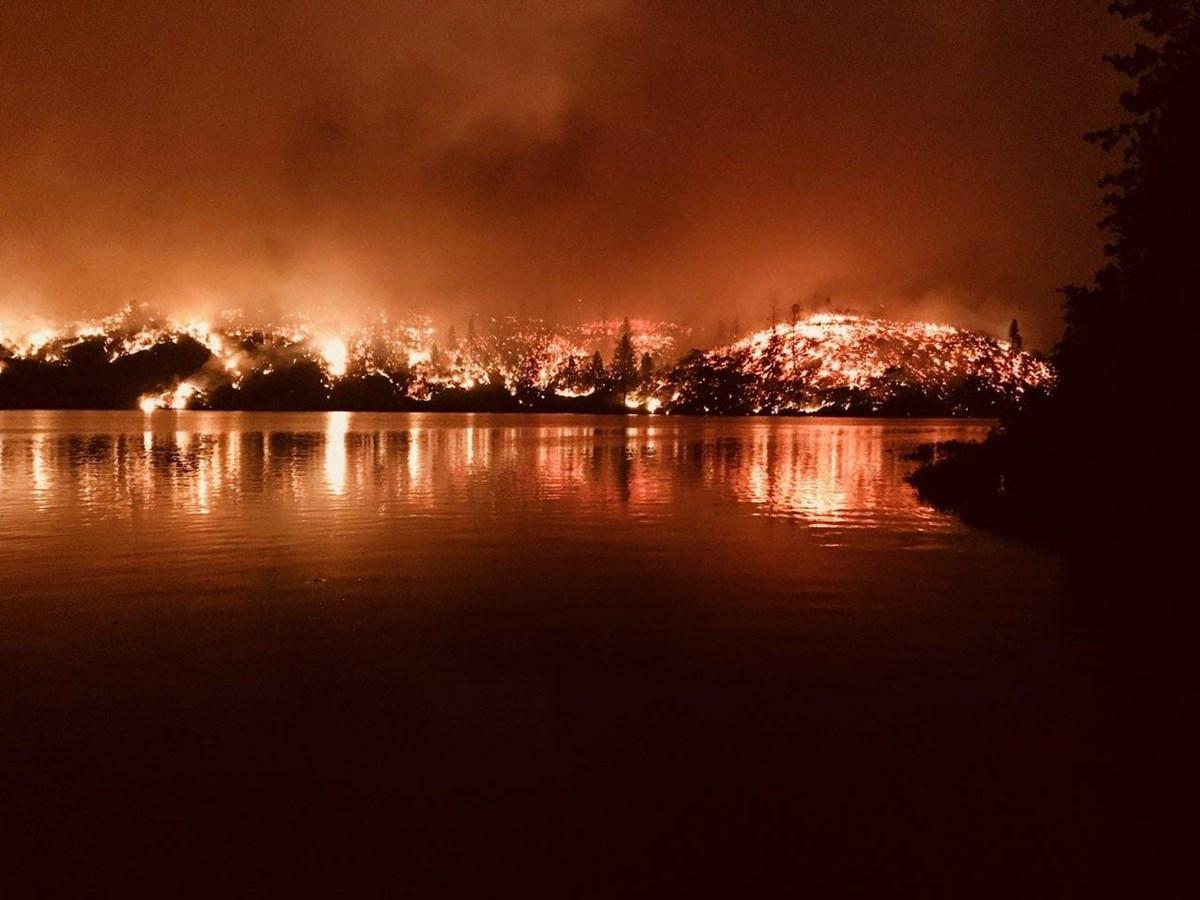
Extreme fire behavior blew up the Carr Fire at Whiskeytown NRA in 2018/CalFire
Parks such as Glacier, which has one main road corridor (the Going to the Sun Road) that a majority of visitors flock to, also face logistical challenges with evacuations that can arrive with wildfires. That was evident in 2018 when the Howe Ridge Fire burned along the northwestern shores of Lake McDonald and destroyed 13 homes in the process.
"A typical August day, all the visitors we have in the park, it keeps our ranger staff pretty busy. Then you add a fire and an area of large private landowners that need to be suddenly evacuated because the fire has taken a sudden turn for the worse, we found ourselves very short-staffed executing that evacuation," said Mow.
Crater Lake Superintendent Ackerman is well familiar with evacuation planning.
"We’ve been evacuation planning almost every year that I’ve been here since 2008. The very first year that I got here there was a very large fire on the southwestern corner of the park. We had literally concentric rings surrounding the Mazama Village area ready to call evacuation because that fire was extraordinarily intense," he said.
"And if you have a fire during peak visitation," continued Gibson, "people with their campers, their RVS, and just trying to get those people out, is a factor."
Though prescribed burns -- intentionally setting fires to clear out forest debris -- has been a tool the Park Service has used frequently in recent decades, decades more of putting out fires as soon as possible created forests littered with fuels. Climate change compounds the problems by bringing hotter summer temperatures, and in some cases less precipitation. Toss in insects such as bark beetles that have been notorious in recent years for killing large stands of forest, and the ingredients are there for huge conflagrations.
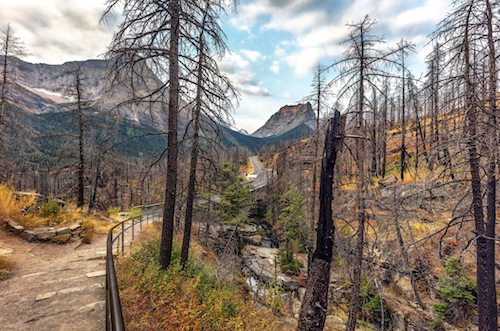
With more and more wildfires, and fires that are more intense, views such as this one in Glacier National Park might become more common in the National Park System/Rebecca Latson
"We’ve suppressed fires for so long we no longer have fire resistant landscapes," said Ackerman. "Then you throw increasing temperature on that, outbreaks of pine beetles, introduction of white pine blister rust, and then the normal pathogens you find in the forest, and we have this massive accumulation of dead fuels.
“And so now when you have a fire, it’s a stand-replacing fire. It burns everything," he said. "And nature doesn’t care. Eventually those forests will come back, in 500 years and look just like they did 500 years ago. But in our lifetime, it will be a catastrophe.”

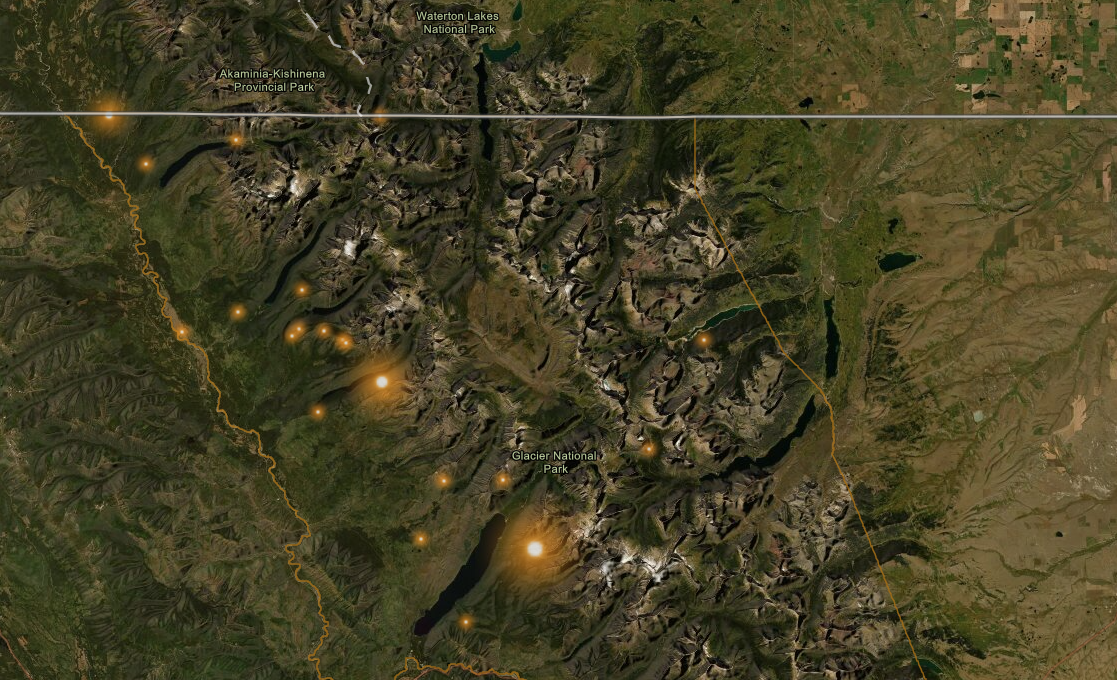
Comments
If climate change is the primary culprit for todays fires. Why, with climate change, do we have far few and far smaller fires than we saw 100 years ago when the largest cause of fires, man has increased dramatically?
Oh gosh, oh gosh, let me guess! Is it because of socialism, contraception, Obamacare, and minimum wage laws?
I don't know Humph, can you make that connection?
World class put-down, Humphrey Ploughjogger!